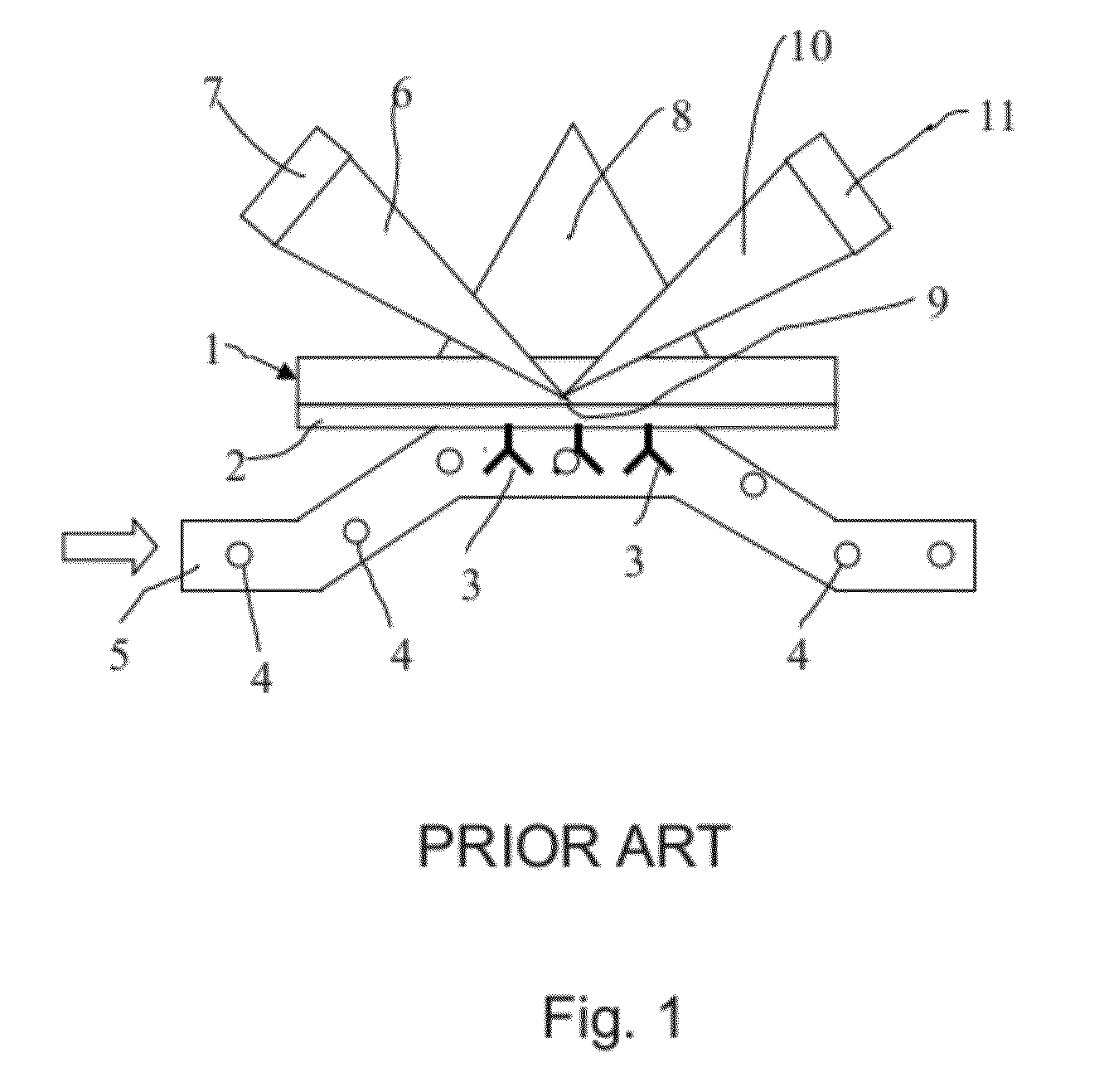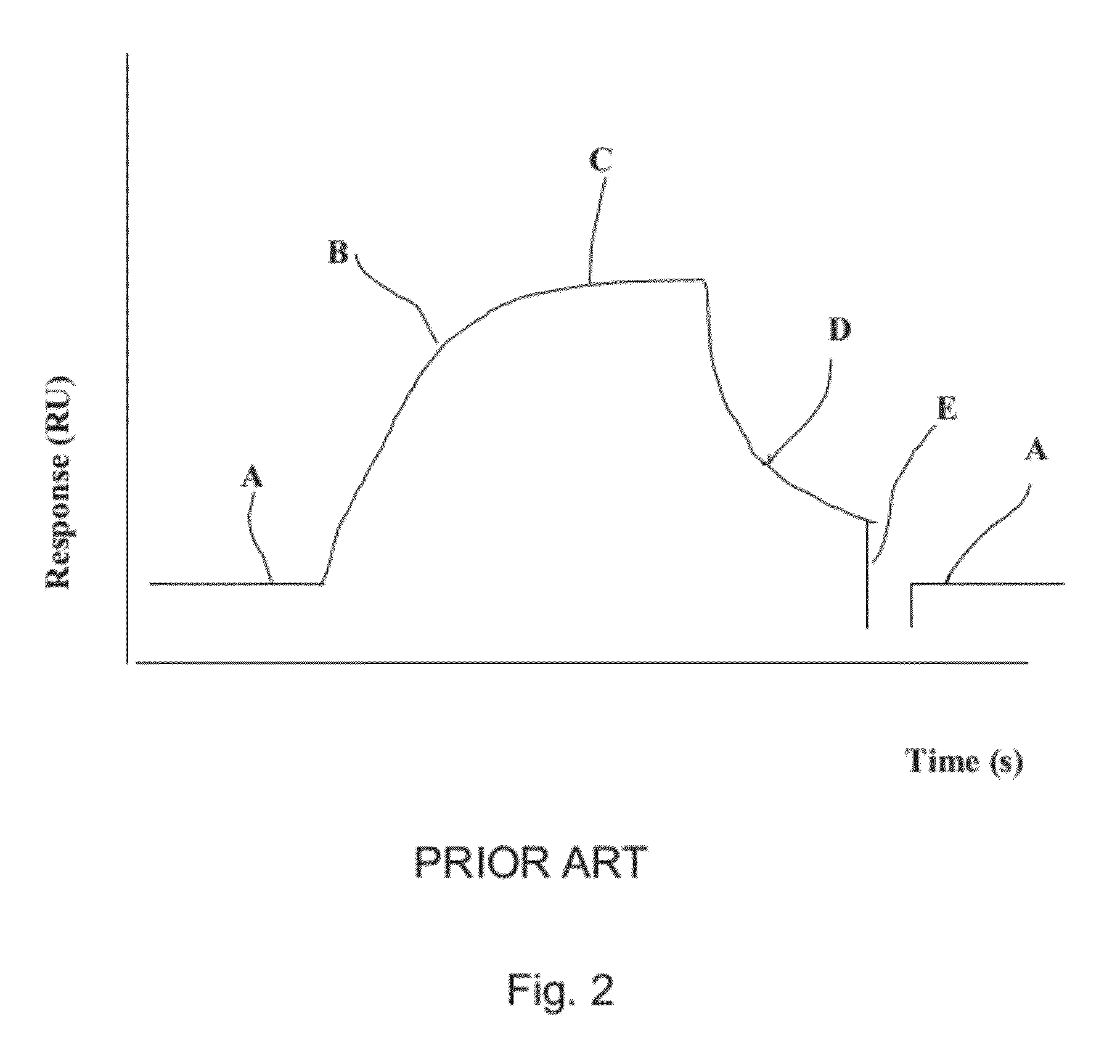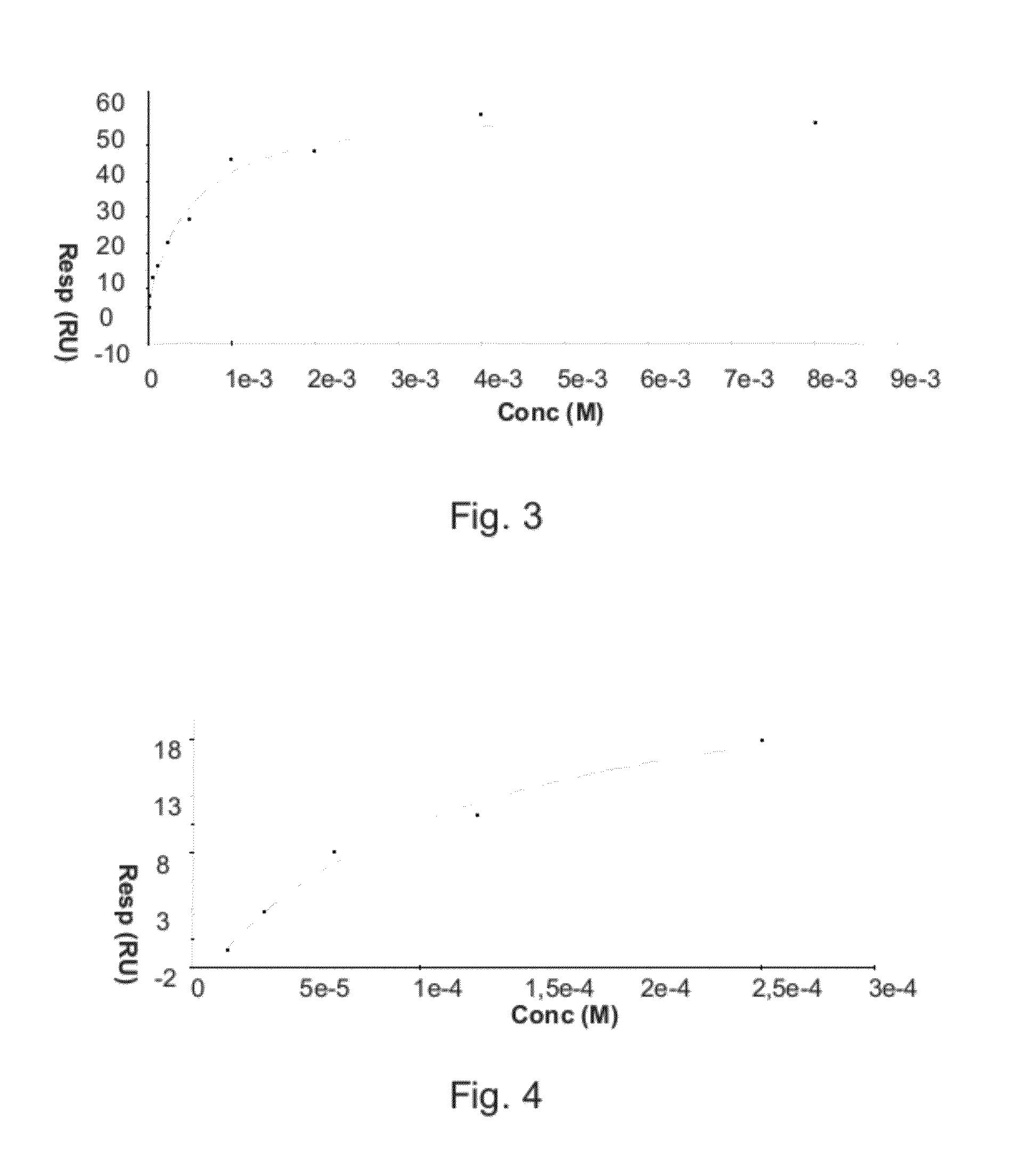Method and system for interaction analysis
a technology of interaction and analysis method, applied in chemical methods analysis, instruments, material analysis, etc., can solve problems such as difficulty in obtaining definitive kinetic data, and achieve the effect of improving and more reliable determination of interaction parameters
- Summary
- Abstract
- Description
- Claims
- Application Information
AI Technical Summary
Benefits of technology
Problems solved by technology
Method used
Image
Examples
Embodiment Construction
[0017]As mentioned above, the present invention relates to the evaluation of steady state binding data for a molecular binding interaction between a first and a second species to determine the affinity for the interaction, wherein steady state binding data for a binding interaction between the first and a third control species is used to estimate the maximum response Rmax for the interaction between the first and the second species. Typically, the experimental binding data is obtained by sensor-based technology, which studies the molecular interactions and presents the results in real time as the interactions progress. Before describing the present invention in more detail, however, the general context in which the invention is intended to be used will be described.
[0018]Unless defined otherwise, all technical and scientific terms used herein have the same meaning as commonly understood by a person skilled in the art related to this invention. Also, the singular forms “a”, “an”, and...
PUM
| Property | Measurement | Unit |
|---|---|---|
| concentrations | aaaaa | aaaaa |
| concentration | aaaaa | aaaaa |
| molar weight ratio | aaaaa | aaaaa |
Abstract
Description
Claims
Application Information
 Login to View More
Login to View More - R&D
- Intellectual Property
- Life Sciences
- Materials
- Tech Scout
- Unparalleled Data Quality
- Higher Quality Content
- 60% Fewer Hallucinations
Browse by: Latest US Patents, China's latest patents, Technical Efficacy Thesaurus, Application Domain, Technology Topic, Popular Technical Reports.
© 2025 PatSnap. All rights reserved.Legal|Privacy policy|Modern Slavery Act Transparency Statement|Sitemap|About US| Contact US: help@patsnap.com



